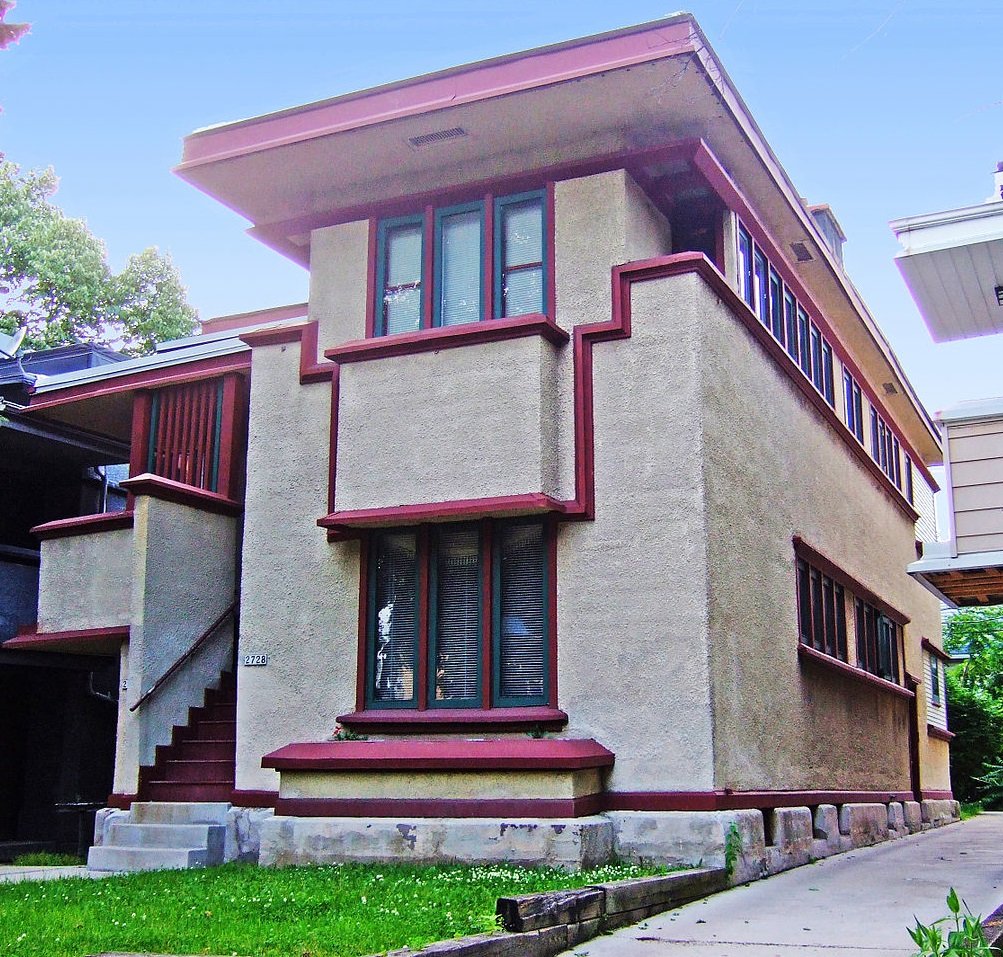#9702. Geometric Prairie Style Façade with Contrasting Burgundy Framing
The image showcases an expressive example of Prairie style architecture, characterized by clean geometric forms and horizontal lines. The two-story structure with a flat roof and projecting eaves creates a sense of solidity and connection to the earth—characteristic features of this style popularized by Frank Lloyd Wright in the early 20th century.
The building's façade features a restrained yet expressive design. The walls are finished with light-colored stucco, which effectively contrasts with the burgundy wooden framing elements. Particularly eye-catching are the geometric accents around the windows, creating depth and rhythm on the façade plane. The window openings are organized in horizontal groups, emphasizing the building's horizontality and strengthening its connection to the landscape.
The staircase leading to the entrance and the small porch blend organically into the overall composition, continuing the geometric theme. The natural stone foundation adds tectonics to the entire structure, creating the impression that the house "grows" from the ground.
When designing a modern façade, several techniques from this example can be adopted: contrasting window framing to create depth and expressiveness; using horizontal lines to visually expand the space; combining different textures and materials (stucco, wood, stone) to create layering and interest; and, of course, unity of geometric concept, where all façade elements adhere to a common stylistic solution.
